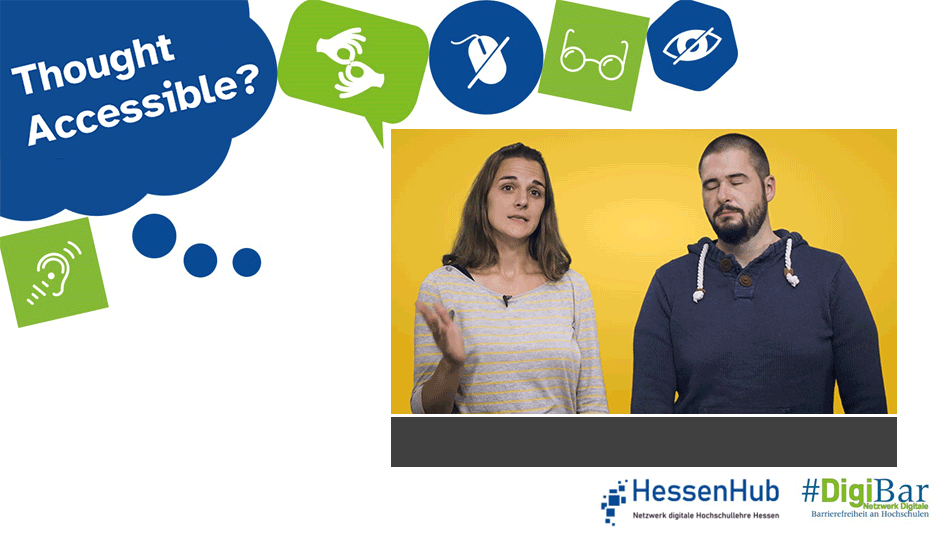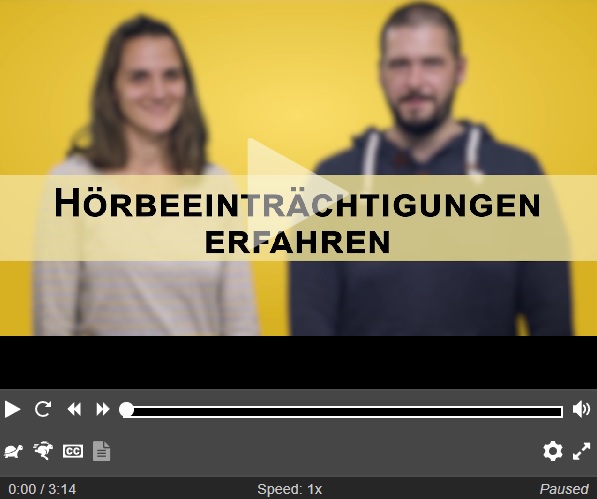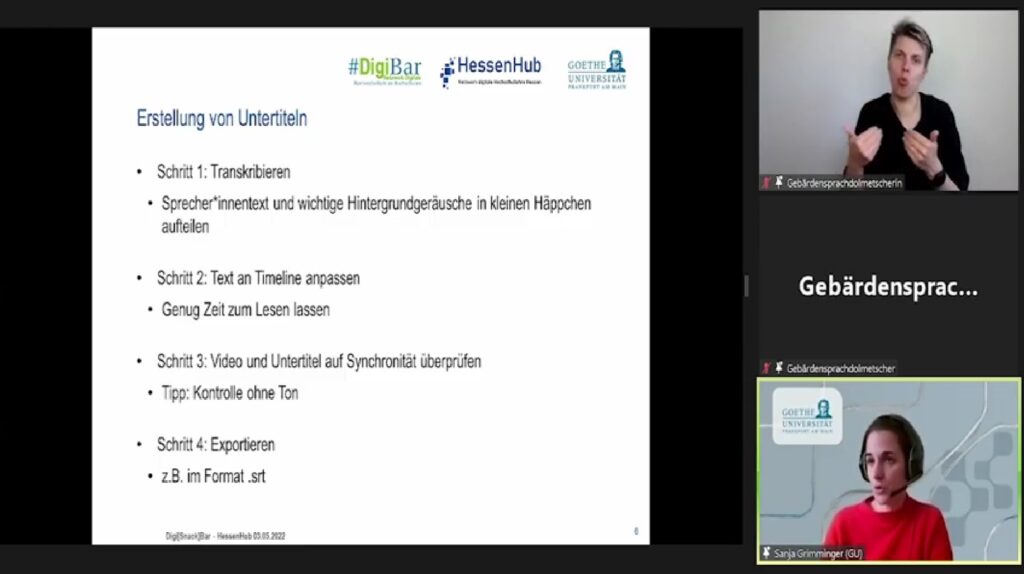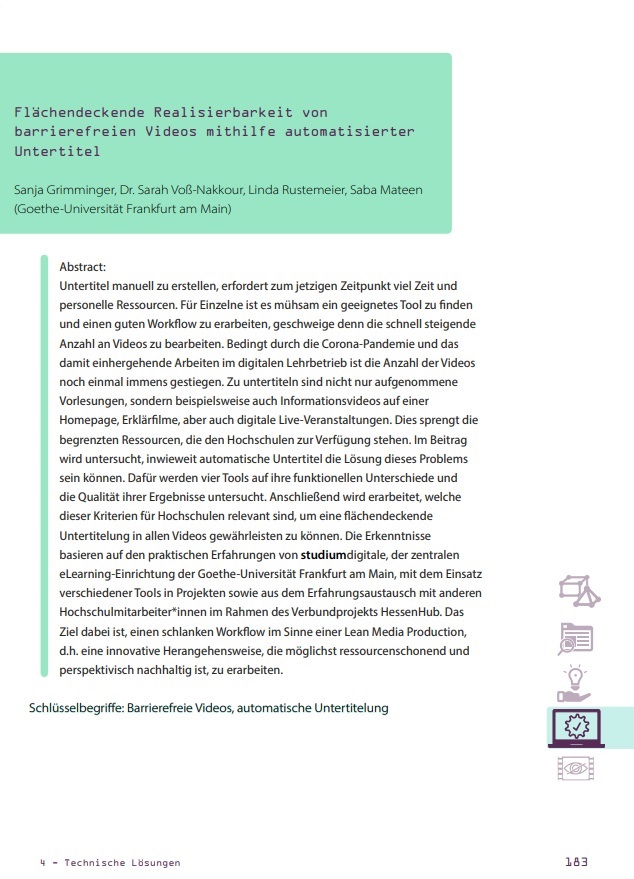Diese Seite gibt es auch auf Deutsch.

Think Accessible!
Videos are ubiquitous in (university) everyday life. In addition to good accessibility through suitable video players and an audio description, subtitles are one of the most important and best known forms of making a video accessible.
Subtitles are not only important for people who do not hear well but also for a wide range of audiences, such as non-native speakers or people in noisy environments.
Further information.
As part of HessenHub – Digital Accessibility, several media products have already been created to highlight the issue of the subtitling:

Raise awareness: In the video “Hörbeeinträchtigung erfahren” (“Experiencing hearing impairment”. About 3 min – in German) you can get an impression of what different types of hearing loss can sound like.

Information for media producers: The answer to the question: “What barriers are there with videos?” (“Welche Barrieren gibt es bei Videos?”) as well as an “Accessible Video Editing Toolkit” (“Tool-Liste zur Barrierefreien Aufbereitung von Videos”) that provides information on creating or embedding subtitles, transcripts and audio descriptions as well as video editing, and the (individual) adaptation of built-in video players.

Lecture and tool presentation: One of the sessions in the DigiSnackBar series focused on when videos are accessible and what subtitle standards and formats exist. This was followed by a presentation of “Subtitle Horse”, a tool for manually creating subtitles.

Automatically generated subtitles: The anthology “Digitale Barrierefreiheit in der Bildung weiter denken: Innovative Impulse aus Praxis, Technik und Didaktik” (“Thinking ahead to digital accessibility in education – Innovative impulses from practice, technology and didactics”) contains an article with the title “Flächendeckende Realisierbarkeit von barrierefreien Videos mithilfe automatisierter Untertitel” (“Comprehensive feasibility of accessible videos with the help of automated subtitles”). In it, four tools are examined for their functional differences as well as the quality of their results. The goal is an innovative approach that is as resource-efficient as possible and sustainable in perspective. In the future, adaptive artificial intelligence (AI) will probably further facilitate subtitling.
Beyond HessenHub we recommend the following links (most in German):
- BIK für Alle: Leitfaden barrierefreie Online-Videos (zuletzt aufgerufen am 31.10.2023)
- english version: About „BIK for all“
- Hochschulbüro für ChancenVielfalt: Töne sehen, Bilder hören – Barrierefreiheit im Video (mit Untertitel) (zuletzt aufgerufen am 31.10.2023)
- NDR: Untertitel Standards (zuletzt aufgerufen am 31.10.2023)
Responsible for the content: WG “Digital Accessibility Campaign”.
Do you have any questions or suggestions? Please contact Sanja Grimminger.
#DenkBarrierefrei #ThinkAccessible #DigiBar #HessenHub #AnAllesGedacht


Pingback: Untertitel – HessenHub – Netzwerk digitale Hochschullehre Hessen